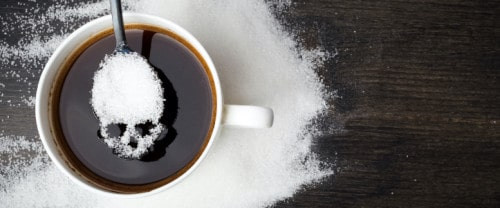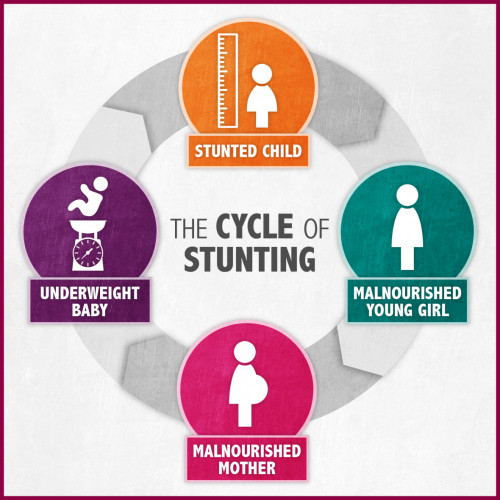Breast milk is the main food for infants 0-6 months of age. Breast milk produced is influenced by the food intake and nutritional history of the mother. Anemia is one of the nutritional problems caused by a lack of micronutrient intakes such as iron, folic acid, and vitamin B12...
The breast milk produced is influenced by food intake and the mother's nutritional history. Anemia is one of the nutritional problems caused by a lack of iron intake found in daily food. Based on the results of the 2007 Riskesdas research, as many as 24.5% of women of childbearing age were anemic. This can indicate that the prevalence of anemia in breastfeeding mothers in infants aged 0-6 months is categorized as high.
The high prevalence of anemia was influenced by maternal intake and non-compliance in consuming blood supplement tablets from health workers during pregnancy and the postpartum period due to lack of vitamin B12 intake. This is because vitamin B12 functions to convert folic acid into its active form and if it is deficient, you will experience megaloblastic anemia. This is in accordance with the results of this study that the intake of sources of iron, vitamin B12, and folic acid obtained from the recall is still less than the recommended RDA and the lack of variety of foods consumed by breastfeeding mothers on daily life.
Breast milk is the main food for infants aged 0-6 months and is given without any additional food or drink other than medication. Infants aged 0-6 are susceptible to disease. Mismatches in the frequency and duration of breastfeeding will cause high morbidity in infants and affect their nutritional status of infants.
To overcome anemia, here are some things that need to be done:
- Take good care of your food intake
During breastfeeding, some of the mother's energy will be used to produce breast milk. Therefore, it is necessary to pay attention to good nutrition (including foods rich in iron) during breastfeeding. Some examples of foods containing iron include meat, liver, chicken, green vegetables, and others.
- Iron Supplementation
Keep taking your iron supplementation for the first few months postpartum to replace the blood loss during childbirth. If you already have anemia, the doctor will provide iron therapy with a higher dose of iron supplementation.
- Avoid drinking tea or coffee while eating
If you are used to drinking tea or coffee while eating, this needs to be avoided because it will inhibit the absorption of iron in the gastrointestinal tract. Instead, drink orange juice with meals as it will help speed up iron absorption in the intestines.
- Routinely check Hb & Ht (Hemoglobin and Hematocrit)
The Hb & Ht examination makes it easier for us to monitor the incidence of anemia. Examination of Hb & Ht (Hemoglobin and Hematocrit) makes it easier for us to monitor the incidence of anemia, therefore, PT Isotekindo Intertama has a tool that can assist you in checking Hb & Ht.
PT Isotekindo Intertama provides a POCT (Point Of Care Test) tool for checking Hemoglobin levels in the blood which is practical and convenient to use because it only requires a small sample (1µL). This is the first biosensor technology for screening hemoglobin In Indonesia, using HemoSmart GOLD Hemoglobin Screening Meter.
The features and other benefits are:
- HemoSmart GOLD Hemoglobin Screening Meter only requires 1μL of blood. The measuring range is wide, 4.0-24.0 g/dL. The wide measurement range will make the HemoSmart GOLD Hemoglobin Screening Meter very easy to monitor hemoglobin in both low and high conditions
- HemoSmart GOLD Hemoglobin Screening Meter only takes 5 seconds, HemoSmart GOLD Hemoglobin Screening Meter can read hemoglobin in the blood in a very short time making it more efficient.
- HemoSmart GOLD Hemoglobin Screening Meter with a small sample volume of 1µL whole blood. With a very small sample size and using whole blood cells, the HemoSmart GOLD Hemoglobin Screening Meter can show an accurate profile of hemoglobin in the blood, thus guaranteeing excessive pain in blood test sampling.
References:
- Bjarnadottir, A. Healthline (2020). Breastfeeding Diet 101: What to Eat While Breastfeeding.
- Centers for Disease Control and Prevention (2021). Do Infants Get Enough Iron from Breast Milk?
- Insert Pack Hemosmart GOLD Hemoglobin Screening Meter.
- Mayo Clinic (2020). Breast-Feeding Nutrition: Tips for Moms.







